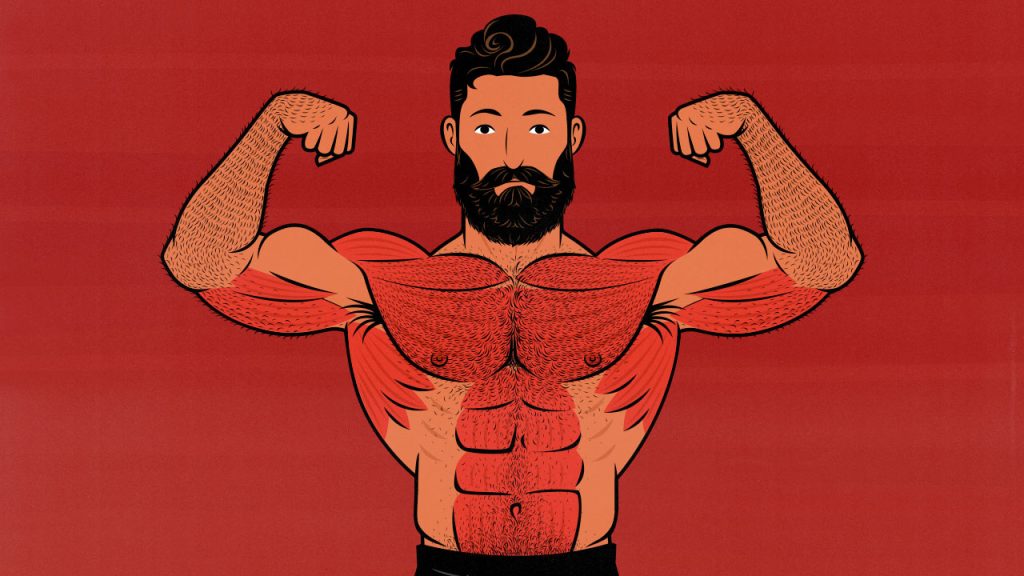
Chest Day Routine: The Best Chest, Shoulder & Triceps Workout
I have a fond spot for Chest Day workouts. I started bulking with absolutely no idea what I was doing. I gained my first 20 pounds while following a workout program that was little more than a push-up challenge.
When I finally started following a real hypertrophy training program, I could bench press more than I could squat or deadlift. As you can imagine, that made me love Chest Day even more.
I soon came into contact with Marco. He’d just gotten back from training under Eric Cressey, the head strength coach for the New York Yankees. He’d started up his own training business, where he was helping professional and Olympic athletes bulk up.
He switched me over to a full-body workout routine, which helped me gain another 40 pounds. However, my bench press soon got stuck at 250 pounds. So I brought Chest Days back into my workout routine, and lo, my bench started moving up again. After a few months, I accomplished my lifetime goal of 315 pounds.
Fortunately, Chest Days aren’t difficult to program. We’ll teach you how to make your own. We’ll also give you a few workouts you can use.
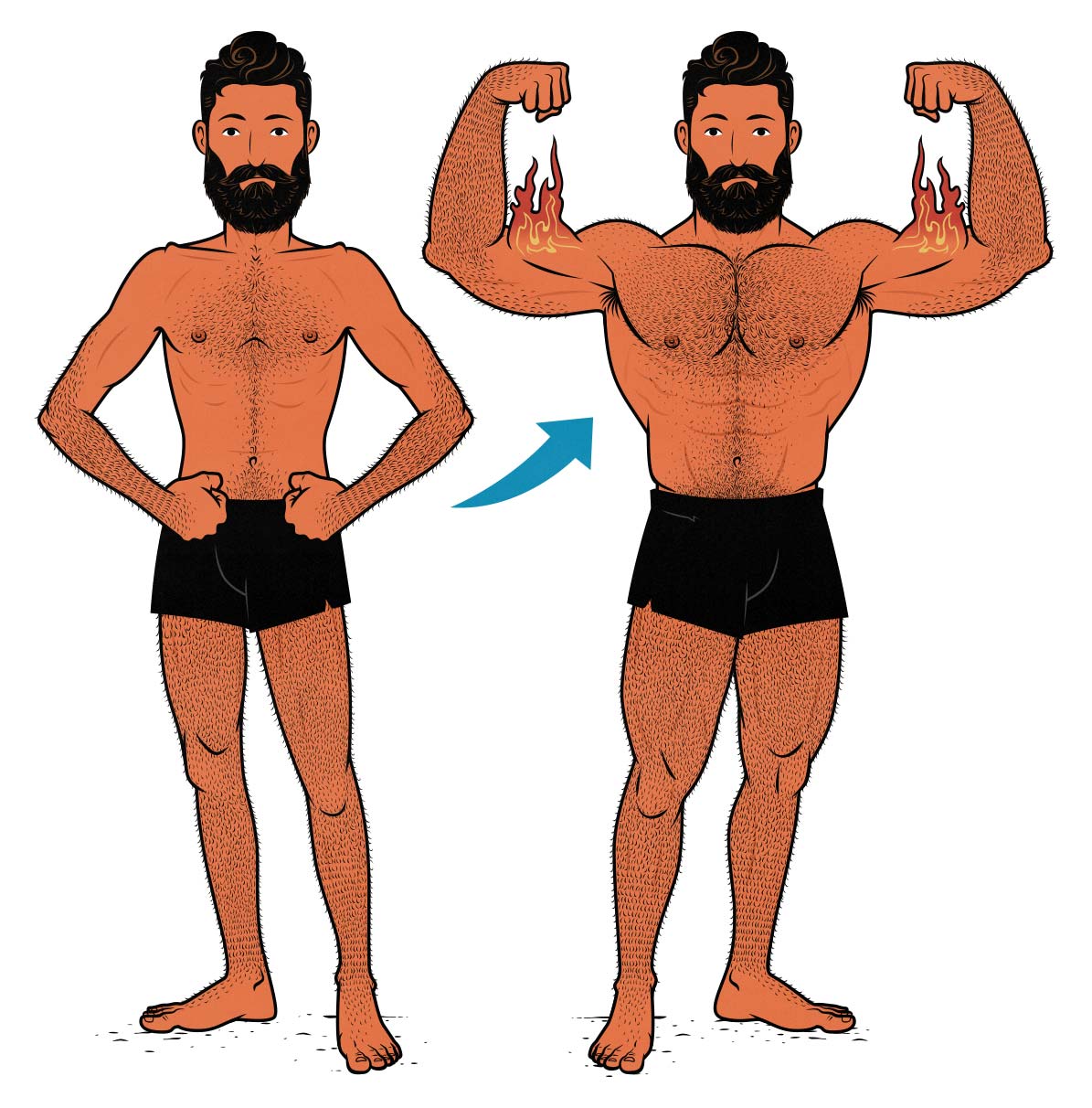
What’s A Chest Day Workout?
“Chest Day” is a workout focused on the chest, shoulders, and triceps. Think of pressing exercises like push-ups, bench presses, and overhead presses, along with isolation exercises like triceps extensions, lateral raises, and the chest fly.
Chest Days are part of body-part “Bro Splits,” where you split your body into different muscle groups, allowing you to train 4+ times per week while still giving each muscle enough time to recover. On Chest Day, you train your chest hard while giving your other muscles a chance to rest.
- Monday: Chest Day <==
- Tuesday: Back Day
- Wednesday: Shoulder Day
- Thursday: Leg Day
- Friday: Arm Day
- Saturday: Rest
- Sunday: Rest
You can also slot Chest Days into a chest or bench press specialization routine, doing Chest Days on Monday and Friday, with a full-body workout on Wednesday. That’s a great way to bring up a lagging chest or blast through a bench press plateau. That’s how I got my bench press to 315.
The Difference Between Chest Day & Push Day
Chest Days and Push Days aren’t always the same thing. Every Chest Day starts with a chest exercise (like a bench press), whereas some Push Days start with a shoulder exercise (like an overhead press).
Chest Days and Push Days are designed for different workout splits, too. Push Days slot into Push/Pull/Legs Splits along with Pull Days and Leg Days. We have a separate article about Push Days.
Muscles Worked During Chest Days
Chest Day workouts emphasize your chest. However, the best chest exercises are pressing exercises, such as bench presses, push-ups, and dips. These exercises also work your shoulders, triceps, abs, and serratus anterior muscles (underneath your armpits).
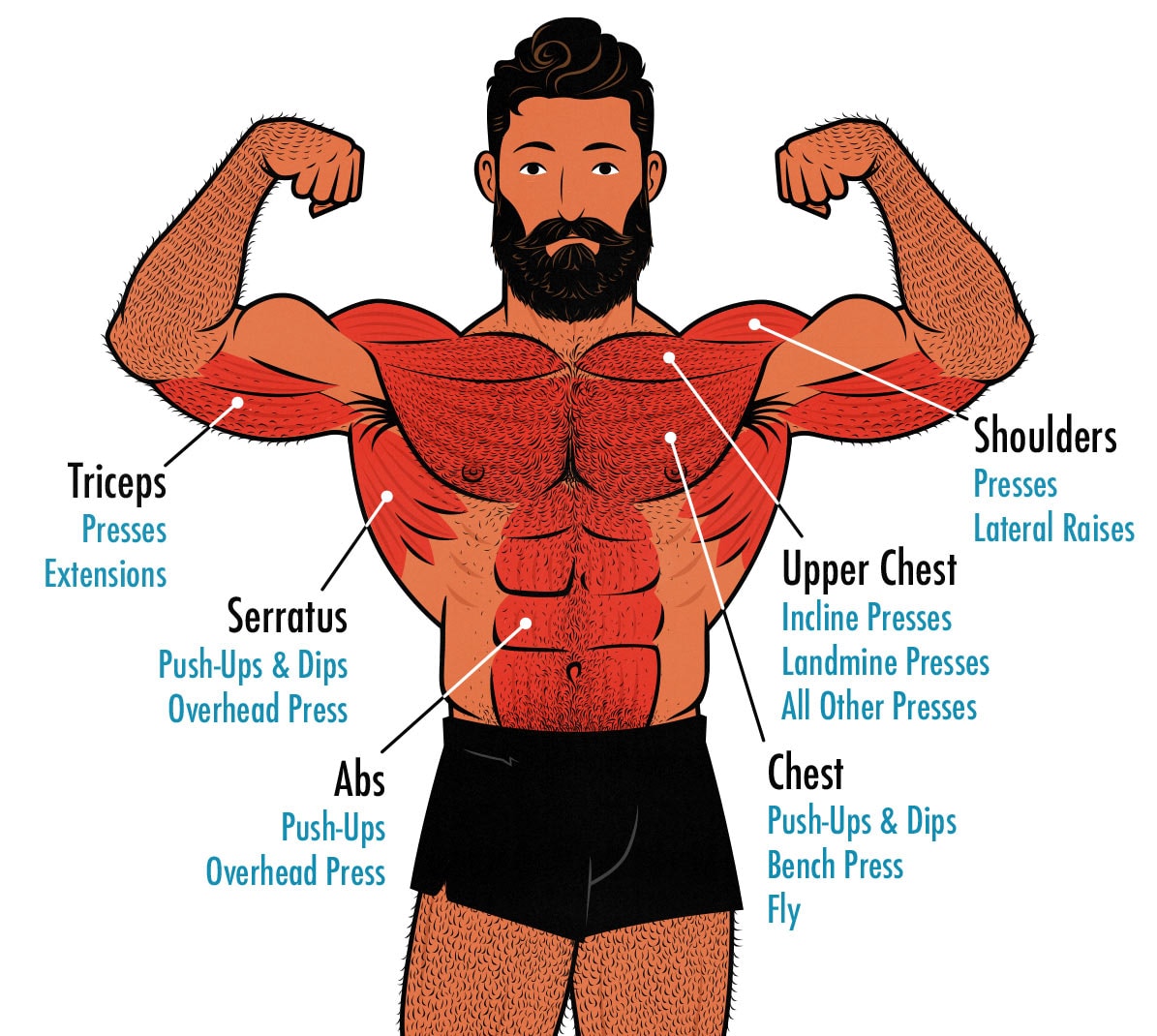
Since you’re already training all these muscles, it makes sense to add some dedicated exercises for them. That’s why chest workouts often include some overhead pressing, triceps extensions, and lateral raises.
The Redundancy Mistake
The most common mistake people make when making Chest Day workouts is using redundant exercises instead of complementary ones. They’ll do a barbell bench press, then a dumbbell bench press, then a chest fly. That’s like using 3 different pans to prepare 3 servings of chicken breast for dinner. It’s an inefficient way to make an unbalanced meal.
It’s usually better to choose one horizontal pressing exercise, like a chest dip, push-up, or bench press. Choose the variation that suits you best, do as many sets as you need, and then move to an exercise that challenges different muscle fibres.
For example, you could do dips (for your mid-and-lower chest), then a dumbbell incline bench press (for your upper chest), then an overhead press (for your front delts), then triceps extensions (for your triceps), then lateral raises (for your side delts). All of those exercises overlap with one another, but they each have a clear purpose, ensuring that each area is stimulated properly.
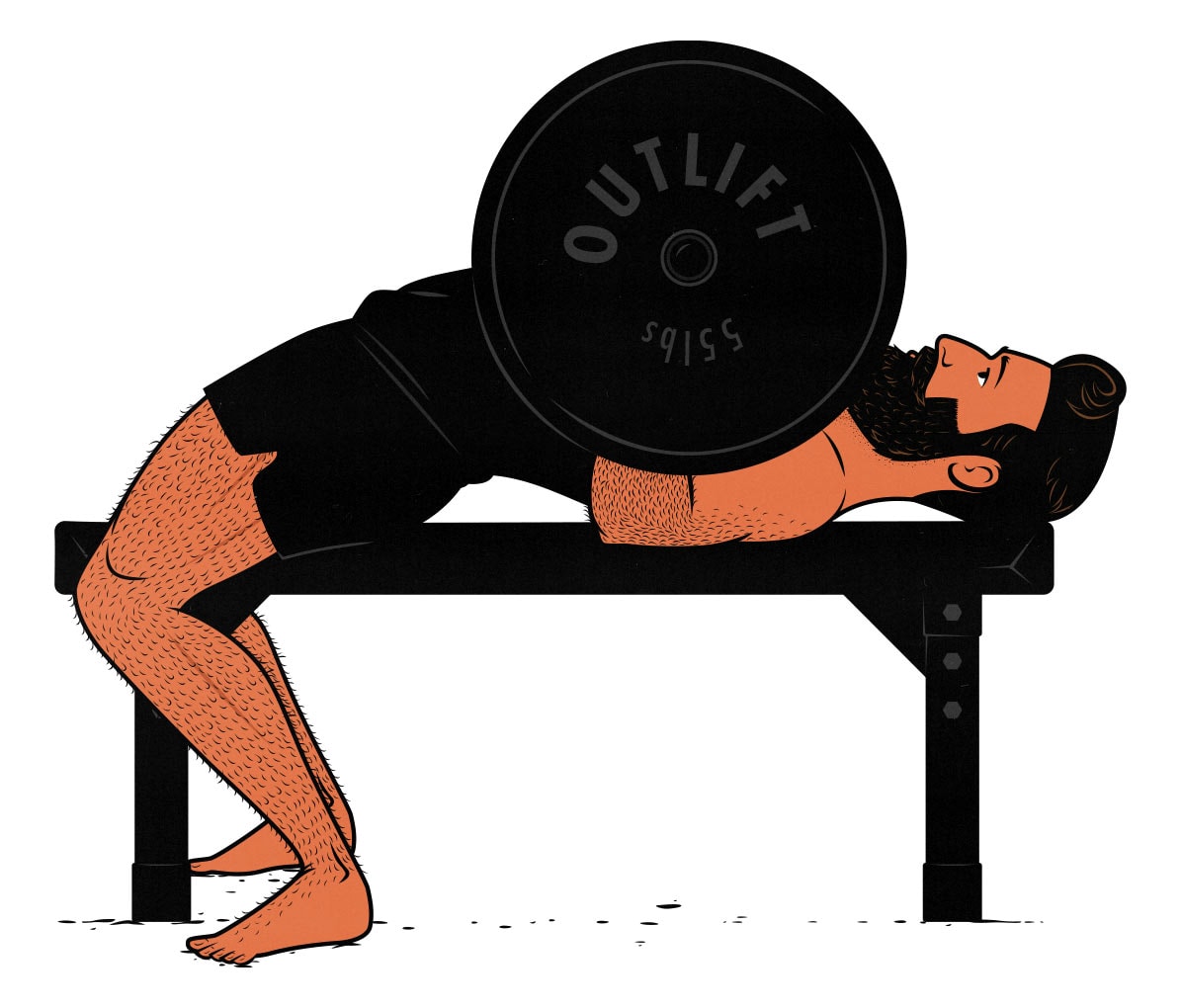
The Best Chest Day Exercises
Mid-and-Lower Chest Exercises
Your mid-and-lower chest is made from the fibres that attach to your sternum. It’s the largest, strongest part of your chest. The best way to train it is with horizontal presses, such as bench presses, push-ups, and dips. These are big compound exercises that also work your upper chest, front delts, and triceps. If your shoulder blades are free to move, they’ll bulk up your serratus anterior muscles, too.
After you’ve finished the compound exercises, you could add an isolation exercise, like a dumbbell or cable chest fly. These isolation exercises train your chest in the exact same way as horizontal presses, but it’s nice to have an exercise where your chest will for sure be the limiting factor.
Here’s how to pick the best mid-and-lower chest exercise:
- Push-Ups are the best place to start. Start with raised push-ups, advance to regular push-ups, then raise your feet up. Push-ups are just as good as bench presses for building a bigger chest, but they have the added advantage of working your abs and serratus anterior.
- The bench press is best when you can do 20 push-ups with your feet raised. The dumbbell bench press lets you go deeper and is good for stubborn pecs. The barbell bench press works your shoulders and triceps harder, making it a bigger compound lift.
- Dips have the advantages of both push-ups and bench presses. Dips work your chest under a deeper stretch, they can be loaded heavy, and they’re relatively easy to progressively overload.
- The Chest Press machine is a good alternative to the bench press. Exercise machines are similarly good to free weights for stimulating muscle growth, at least in the main muscles you’re working.
- The chest fly is great for isolating your chest. You can do these with a machine, dumbbells, or cables. Machine flyes and dumbbell flyes are probably more effective than cable flyes since they challenge your muscle under a deeper stretch (full analysis).
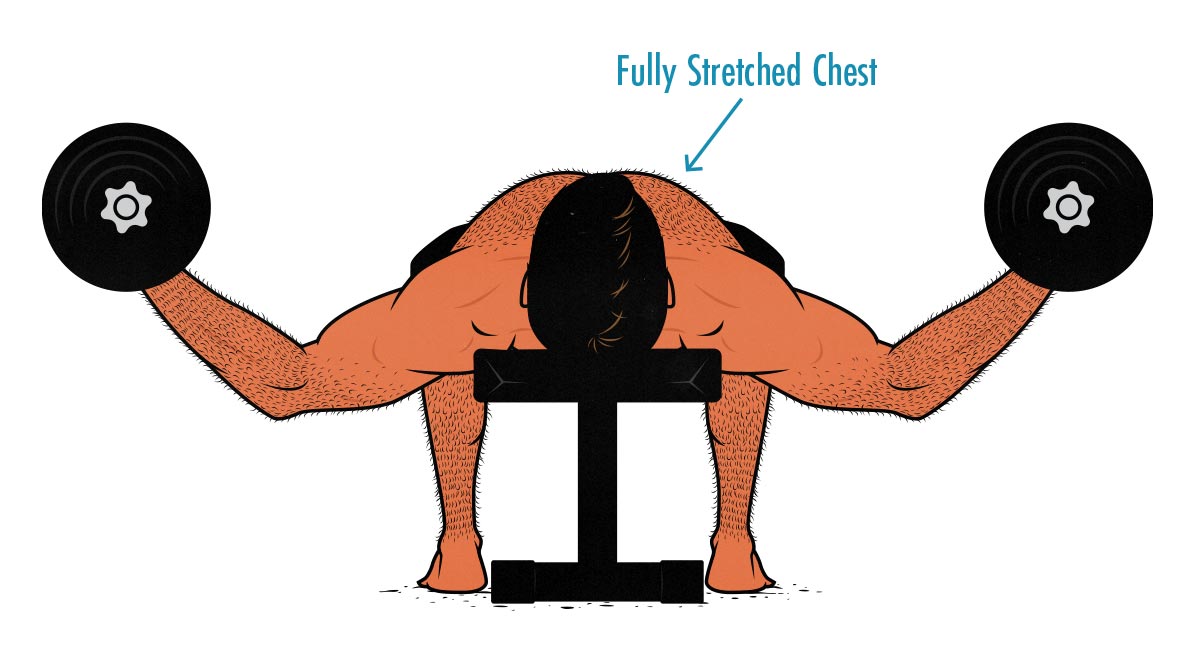
Upper-Chest Exercises
Your upper chest is the small area of your chest that attaches to your collarbones. Horizontal presses train your entire chest, but it’s common for the upper chest to lag behind. You can shift more emphasis to your upper chest by using a narrow grip (like a close-grip bench press) or using an incline (like a low-incline bench press).
Your front delts have a similar function to your upper chest, so if you’re training one, you’re usually training the other, at least to some degree.
Here’s how to pick the best upper-chest exercise:
- Incline bench presses are good for beginners. They’re stable, easy to learn, and don’t require much shoulder mobility. You can use a machine, dumbbells, or a barbell.
- Landmine presses are good for performance. They’re more difficult to set up, but they challenge your core and serratus anterior along with your upper chest, making them great for improving shoulder stability and performance. When Marco was training professional and Olympic athletes, these were a favourite of his.
- Close-grip bench presses are great for improving bench press strength. The narrower grip shifts a bit more emphasis to your upper chest. The movement is almost identical to the classic bench press, allowing your strength to transfer from one lift to the other. I used these to bring my bench press up to 3 plates.
Triceps Exercises
You don’t need triceps exercises on Chest Day. You could save them for Arm Day. But your arms will grow faster if you stimulate them 2–3x per week. That’s why I like to include at least one triceps exercise on Chest Day, Shoulder Day, and Arm Day.
As we explained in this article, the long head of your triceps can’t fully engage during pressing movements, so if you want big triceps, you need triceps extensions (study).
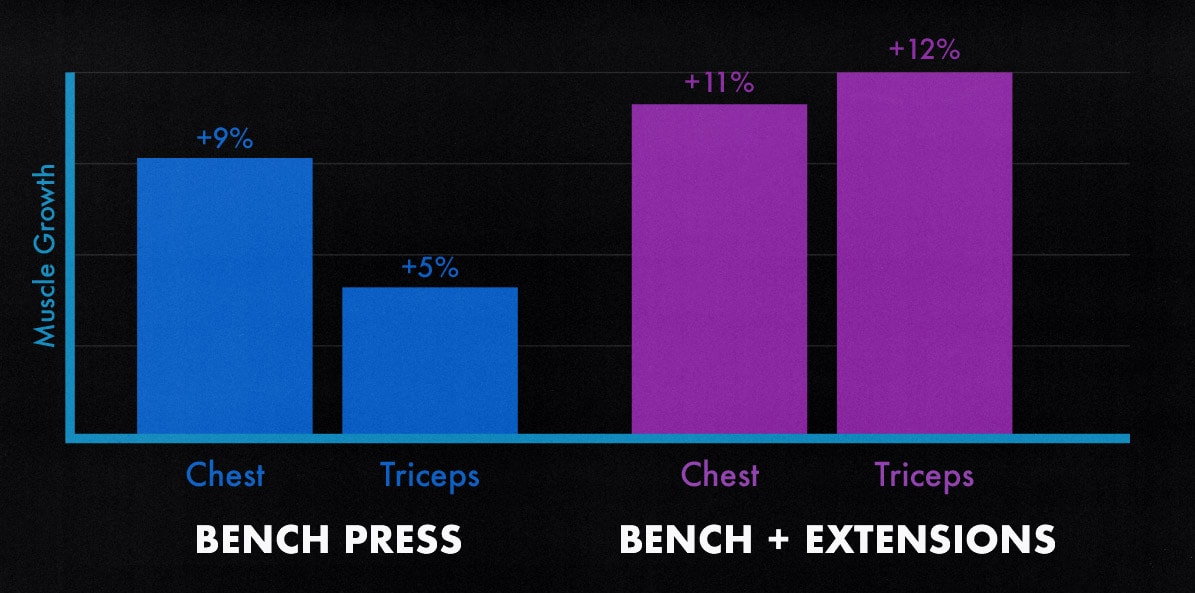
Here’s how to pick the best triceps exercise:
- Triceps pushdowns are great for beginners. They’re easy to learn, easy on the elbows, and don’t require much shoulder mobility.
- Overhead extensions stimulate the most muscle growth (study). If you have the shoulder mobility to lift your arms fully overhead, overhead extensions are ideal. Stretching your triceps at the shoulder joint works them through a deeper range of motion, improving muscle growth (study).
- Skull crushers are great for building a bigger bench press. Skull crushers are famous as an assistance exercise for the bench press. They’re great for building bigger triceps, too.
Chest Day Workouts
The Classic Chest Day Workout
| EXERCISE | SETS | REPS |
|---|---|---|
| Weighted Dip | 4 sets | 8-12 reps |
| Incline Bench Press | 4 sets | 8-12 reps |
| Chest Fly | 3 sets | 10–15 reps |
| Overhead Triceps Extension | 3 sets | 10-15 reps |
| Lateral Raise | 3 sets | 10–15 reps |
A good chest workout kicks off with a big horizontal press, such as a bench press, push-up, chest press machine, or weighted dip. Pick whichever exercise you prefer.
Next, choose an exercise for your upper chest. You could do an incline press, landmine press, close-grip bench press, or push-ups with your feet raised.
With the compound exercises done, we’re left with triceps extensions, chest flyes, and lateral raises. You could do these with short rest times, as drop sets, or as a giant set.
The High-Volume Chest Day Workout
| EXERCISE | SETS | REPS |
|---|---|---|
| Bench Press | 5 sets | 6-12 reps |
| Incline Bench Press | 4 sets | 8-12 reps |
| Overhead Dumbbell Press | 4 sets | 10-15 reps |
| Overhead Triceps Extensions | 3 sets | 10-15 reps |
| Chest Fly | 3 sets | 12–15 reps |
| Lateral Raise | 3 sets | 12–15 reps |
This is a higher-volume Chest Day workout. There’s an extra set on some exercises, and we’ve added in the overhead press.
This isn’t necessarily better than the classic workout, but some people benefit from higher trainer volumes than others. If the first workout feels too short or easy, this will suit you better.
The Minimalist Chest Day Workout
| EXERCISE | SETS | REPS |
|---|---|---|
| Dips | 3–4 sets | AMRAP* |
| Overhead Triceps Extensions | 3 sets | 10-20 reps |
| Lateral Raises | 3 sets | 12–20 reps |
The minimalist Chest Day workout takes an 80/20 approach to training. It won’t be enough to fully maximize muscle growth, but it should be enough to make progress. It’s definitely enough to maintain your gains, even while cutting.
I like to train more rigorously while bulking, but I’m a big fan of these workouts when I’m not eating in a calorie surplus.
Using a higher rep range encourages your body to build new blood vessels to feed your muscles. That could potentially improve your muscle growth in the future. Makes for a nice bonus during periods of maintenance, I think.
This workout is built on dips or push-ups. These are light exercises, so you’ll barely even need to warm up. You can do the triceps extensions and lateral raises as a superset, saving even more time. Since you aren’t doing many sets, I recommend taking all of them to failure.
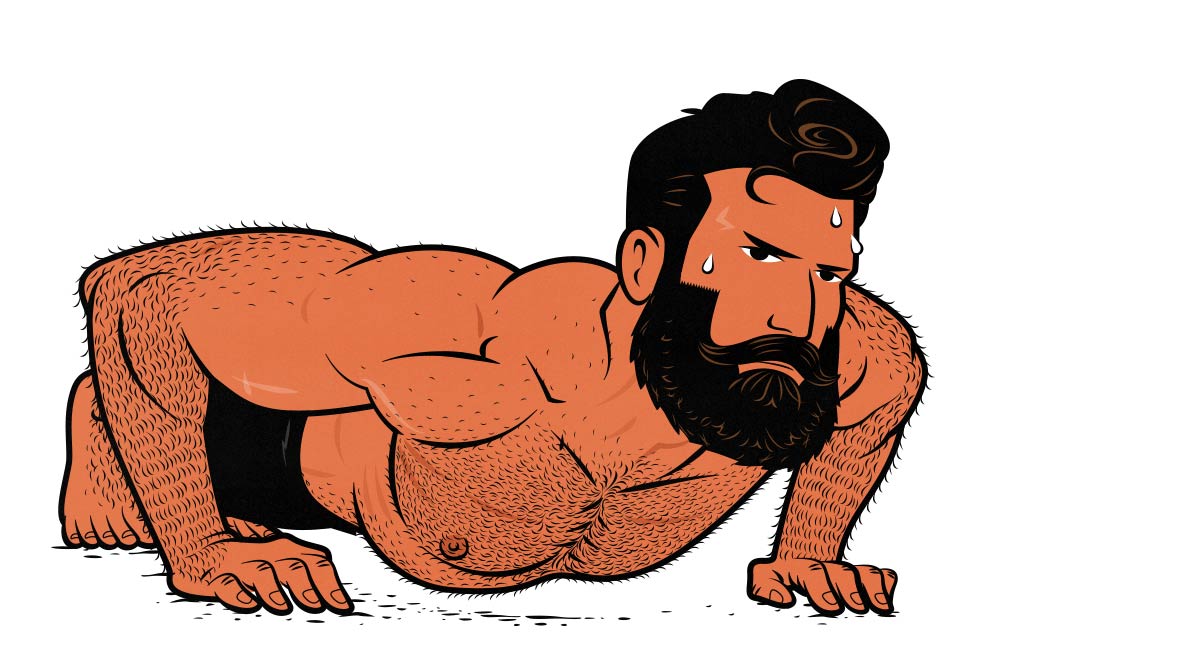
Chest Day Training Guidelines
Chest Days are part of the bodybuilding tradition. The focus is on stimulating muscle growth, not getting stronger at specific lifts. However, you’ll find it much easier to build muscle if you focus on progressive overload. It’s the simplest way to measure the progress you’re making.
Here’s what we recommend:
- Progression: The goal is to get progressively stronger at the first exercise of each workout. If you hit your rep targets last workout, add a little weight. If you’re still trying to add more reps, try to get more total reps than last time. For example, if you got 8, 7, 6, and 5 reps (26 reps) last workout, try to get 27+ reps this workout.
- Volume: We have 5 exercises in the classic Chest Day workout. That’s probably enough to maximize your rate of muscle growth, provided you lift deep, hard, and properly. Some people benefit from more training volume than others, though, so we’ve given higher-volume and minimalist approaches well.
- Rest times: Classic Chest Day workouts are done with moderate or short rest times. We recommend resting for 3 minutes between sets on the first exercise, 2 minutes between sets of your other compound exercises, and 1 minute between sets of isolation exercises.
- Reps in Reserve: Push yourself hard on the first exercise, leaving 0–1 rep in reserve, ideally without failing your last rep. On the other exercises, leave 0-2 reps in reserve. I like to take the last exercise all the way to failure.
- Eat for Muscle Growth: You need enough food to fuel muscle growth. If you’re skinny-fat or overweight, you can get extra energy from your body fat. If you’re thin or lean, you’ll need to get that energy from your food—you’ll need to gain weight.
Conclusion
Alright, that’s it for now. If you have any questions, drop them below. I’ll answer all the comments. Otherwise, keep your chest up and press onwards.
If you want us to keep you updated on the latest muscle-building research, methods, and workouts, we have a free muscle-building newsletter.



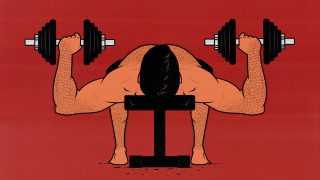
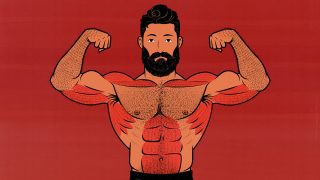
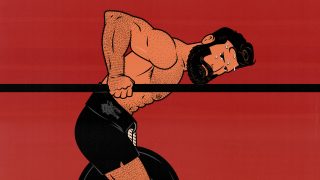

Hello, Shane. To calculate the volume of chest training, do you have to separate each of the parts? For example, should we calculate the lower, upper, and middle part?
Hey, Amir. Different experts have different systems for counting volume. There’s more than one correct way to do it. The numbers you aim for will change depending on the system, though.
I like to count every set that challenges an area as a unit of volume. So, with the chest, a flat bench press challenges the lower chest (abdominal head), mid chest (sternal head), and upper chest (clavicular head). The same is true of low-incline bench presses, dips, push-ups, and most other big pressing exercises.
However, I also like to make sure that every muscle has an exercise that trains it properly and pushes it close enough to failure. With the chest, that usually means including an exercise that brings the upper chest closer to failure, such as an incline bench press, push-up, or landmine press.
If you have 4 sets of the flat bench press and 4 sets of the incline bench press, that’s 8 for your overall chest, and you’ve got an exercise that works every muscle fibre properly, so you’re covered.
From there, you can pay attention to how it feels. A day or two after your chest workout, which areas of your chest are sore? If one area is much sorer than another, maybe you need to shift the balance around a bit.